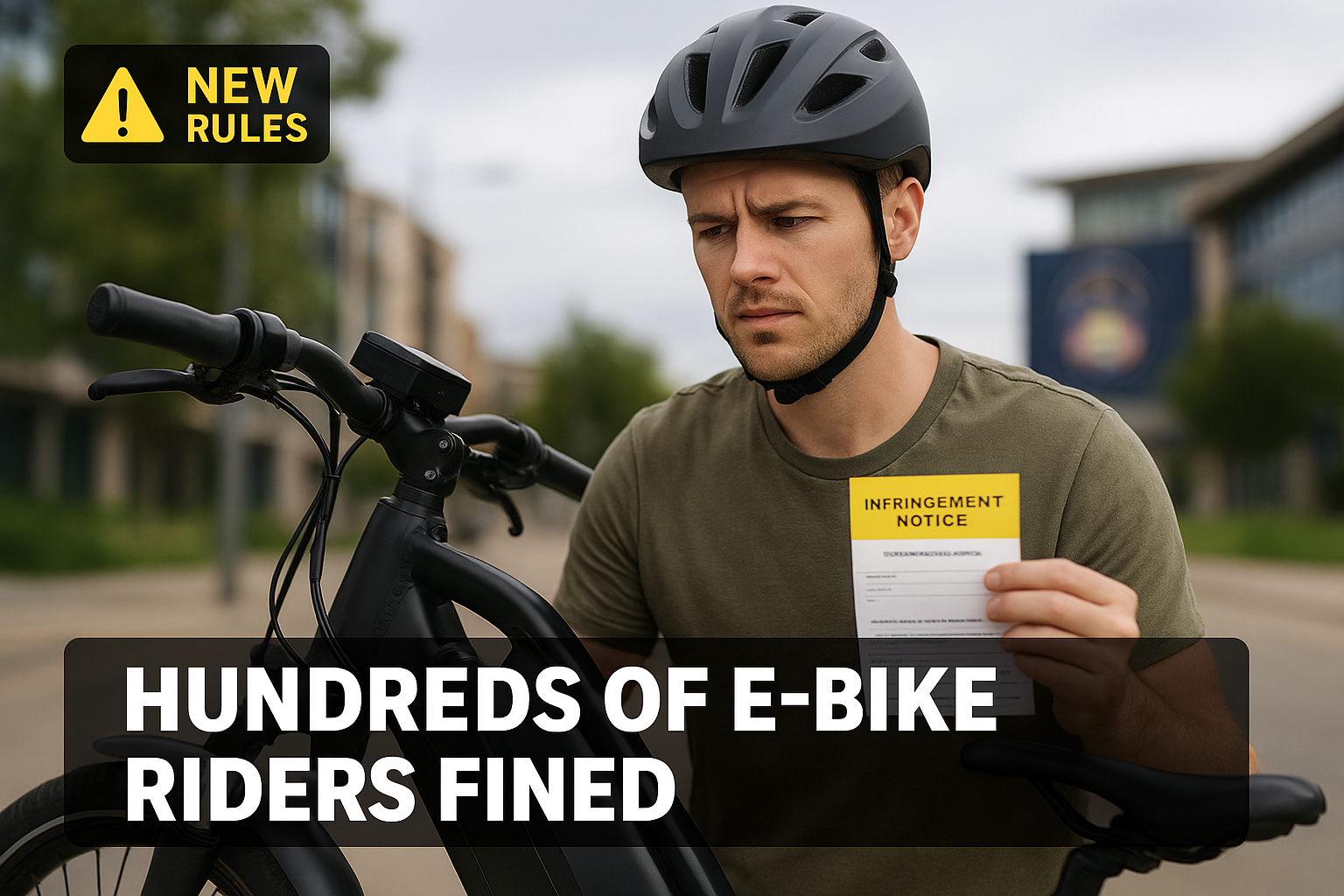Australia police forces have recently launched a series of enforcement operations targeting riders with e-bikes that fail to meet legal standards. In August, Melbourne’s “Operation Consider” and other crackdowns elsewhere resulted in hundreds of intercepts and fines for illegal or overpowered e-bikes. The wave of penalties has stirred debate over safety, compliance, and regulation of electric bikes.
What Happened
- Victoria Police carried out “Operation Consider,” focusing on Melbourne’s CBD and nearby areas, targeting e-bikes, unregistered motorcycles, and illegal modifications.
- During one month, 274 road users were intercepted: 135 were e-bikes, 30 were regular bicycles, and 17 petrol motorcycles. More than half of the e-bikes were found to be overpowered.
- Offenses included using unregistered vehicles, riding unlicensed, ignoring traffic signals, riding dangerously, and failing to comply with speed limits.
Key Rules for Legal E-Bikes
To be legal, most e-bikes must meet these criteria:
| Requirement | Details |
|---|---|
| Motor power | For EPAC-type e-bikes: motor ≤ 250 watts; rider must pedal to access motor assist. |
| Speed limit | Top speed when assisted should not exceed ~ 25 km/h. |
| Throttle/rider interaction | Assistance should cut off when rider not pedaling (or beyond certain speed). |
| Registration & Compliance | Overpowered e-bikes are treated like motorcycles: need registration, licensing. |
| Rider rules | Helmet use, obey traffic signals, no mobile phone use while riding, ride legally on roads or bike paths. |
Penalties & Findings
- Riders found with overpowered e-bikes may face large fines for using unregistered vehicles, riding unlicensed, or operating unsafe machines.
- In Victoria, many of the intercepted e-bikes exceeded legal power or speed limits. Over 50% of e-bikes in some operations were overpowered.
- Other penalties include impounding of bikes, and in extreme cases destruction of illegal e-bikes.
Why This Matters
- Public Safety: Overpowered e-bikes pose serious risk to riders, pedestrians, and other road users—particularly at high speeds or when braking and control fail.
- Regulation Gaps: Many riders may be unaware of precise legal limits for speed, power, or throttle behavior.
- Enforcement and Compliance: Authorities are stepping up patrols, safety checks, and crackdowns to reduce dangerous behavior.
Frequently Asked Questions (FAQ)
What exactly qualifies as an “overpowered” e-bike?
A: An e-bike that exceeds specified power output (e.g. more than 250 watts) or one that allows motor assistance beyond legal speed limits (e.g. assisting above ~25 km/h when pedaling).
Do I need registration or a licence if I have a high-powered e-bike?
A: Yes. If your e-bike is “overpowered,” it may be treated like a motorcycle under law, which requires registration and appropriate licensing.
What safety gear is mandatory?
AA helmet is required. Riders must also obey traffic laws, signals, and rules for bicycle and road use.
What happens if my e-bike is seized for being non-compliant?
Depending on jurisdiction, you may be fined, your bike may be impounded, or in some cases destroyed.
How can I check if my e-bike is legal in my area?
Review the local e-bike regulations specifying power, speed, and licensing requirements. Check whether your bike’s motor, throttle, and speed settings comply.
Key Takeaway
The recent crackdowns in Australia show that having an illegal or overpowered e-bike can bring serious consequences. If you own or ride an e-bike, it’s worth double-checking your bike’s compliance—not just for legal reasons, but for safety. The laws exist to protect both riders and others.
